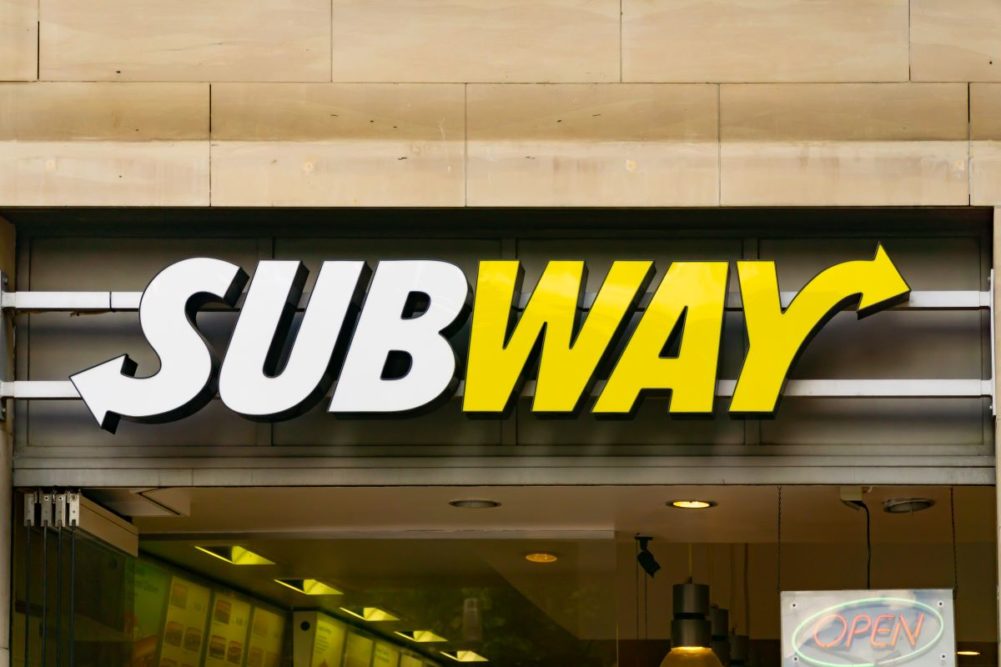MILFORD, CONN. — An apparent decision to sell the business follows a period of instability and contraction at Subway. According to the Wall Street Journal, the company’s management may be interested in seeking a buyer for the business, which could be valued at more than $10 billion.
Since the opening of its first sandwich shop in 1965, Subway has been a family-owned business operated by Doctor’s Associates Inc. Subway is the largest limited-service menu sandwich chain in the United States measured by both units and sales. The company operated 21,147 locations in the United States in 2021, according to Technomic Inc., a market research company covering foodservice sectors. In 2021, Arby’s came in second place with 3,409 locations in the United States, Technomic said.
Subway’s US sales in 2021 totaled $9.4 billion, almost double the revenue of No. 2 Panera Bread, St. Louis, at $5.72 billion. Sales of Atlanta-based Arby’s in 2021 totaled $4.46 billion, according to Technomic.
Subway co-founders Fred DeLuca and Peter Buck, PhD, created the corporate organization, Doctor’s Associates, in 1965 when they opened their first restaurant, Pete’s Super Submarines. The restaurant was renamed Subway in 1972, and locations were first franchised in 1974.
DeLuca was the company’s chief executive officer until his death in 2015. DeLuca’s sister, Suzanne Greco, who had been with the company since 1973, succeeded him as CEO.
In May 2018, Greco retired as CEO to become a senior adviser to the company. Afterward, Subway was without a permanent CEO for a year and a half. In May 2019, John Chidsey was named CEO.
At the time Chidsey was appointed, in an effort to curb record store closing rates, Subway began requiring franchisees who declined to renew their leases to report to a committee at its Milford headquarters. Nearly 6,000 US restaurants have closed since 2015, when the chain peaked at 27,103 domestic locations.
The company does not share publicly how many sandwiches it makes a year, nor how much bread it bakes, but Subway has a history of offering new varieties of bread to meet consumers’ evolving palates.
“Great bread is part of Subway’s DNA,” Carrie Walsh, chief marketing officer at Subway, said in October 2021, when the company test-launched 1-net-carb Hero Bread sandwich rolls at its restaurants. As a sandwich base option, Hero Bread would add 1 gram of net carbohydrates per 6-inch sub roll, according to Subway.
With continued innovation among its bread options, the company has addressed a variety of dietary concerns and changing consumer preferences.
In 2013, when gluten-free claims were emerging as a healthy-eating trend, Subway launched pre-packaged gluten-free rolls and brownies in several test markets across the country. As part of the Subway Fresh Forward campaign in the summer of 2017, the company rolled out another gluten-free bread option through self-order kiosks.
Further health-focused innovations by the restaurant included a 9-grain wheat bread variety that featured 51% whole grains, developed in 2015 through a collaboration with Aryzta, Lineage Logistics and Southwest Baking. The same year, the company said it would remove all artificial colors, flavors and preservatives from all of its menu items in North America by 2017.
“Back in 1965, when Fred DeLuca and Peter Buck opened their first sandwich shop in Bridgeport, Conn., they had a simple goal: give their neighbors and customers easy access to good, quality food at a great value,” said Elizabeth Stewart, director of corporate social responsibility for the Subway brand, commenting on the company’s 2015 initiative to eliminate artificial ingredients from its sandwiches. “Today, Subway has thousands of locations, but we still uphold the same standards.”
Subway’s determination to “freshen” its selection of bread options was demonstrated in a 2019 partnership with King’s Hawaiian bread. The company became the first quick-service restaurant to bake King’s Hawaiian’s signature bread fresh in its restaurants.
“These new sandwiches are unlike anything out there, and Subway is offering guests a chance to try this iconic bread like they never have before — freshly baked,” said Len Van Popering, chief brand and innovation officer at Subway.
At the 2021 BEMA annual meeting, Anthony Tsocanos, food scientist, bakery, at Subway said the pandemic prompted the company to reformulate its bread.
Pre-COVID, Tsocanos explained, the company had been exploring a wide range of innovations. He said Subway found itself “prioritizing and reprioritizing” by mid-2021.
“There was a concerted effort to make a huge change to the core footlong,” he said.
Subway partnered with Aspire Bakeries and another partner to reformulate the company’s signature sandwich rolls for the changing marketplace landscape. The objective was to develop the new formulation at a lightning-fast speed, he said.
Two new fresh-baked bread varieties, Artisan Italian and Hearty Multigrain, were part of “historical changes and improvements” the restaurant chain rolled out as part of its “Eat Fresh Refresh” menu makeover in the summer of 2021.


